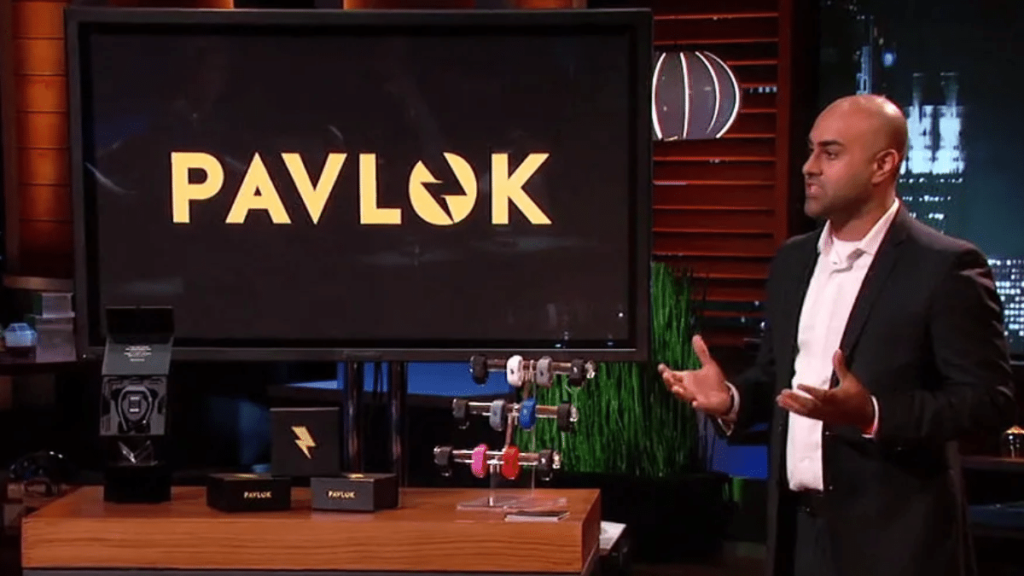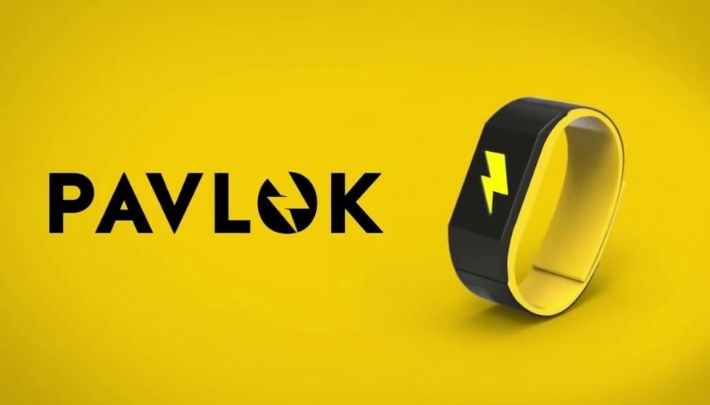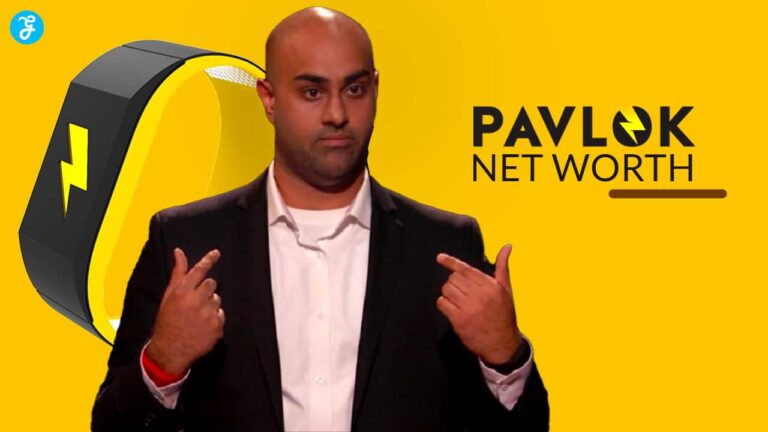In today’s fast-paced world, breaking bad habits is more complex than ever. With distractions around every corner, many people struggle to maintain discipline regarding their health and productivity. This is where Pavlok, a revolutionary wearable device, comes in. Pavlok uses aversion therapy to help people overcome bad habits like smoking, nail-biting, and procrastination by delivering small electric shocks. The company has made waves since its inception, drawing attention to popular shows like Shark Tank and growing to be worth an estimated $2 million as of 2024.
In this comprehensive article, we will explore Pavlok’s journey from an idea born out of personal struggles to becoming a high-growth tech company. Along the way, we will examine how Pavlok’s unique approach to behavior modification has set it apart from competitors and contributed to its growing net worth.
The Origin of Pavlok: Turning Personal Challenges into Innovation
Maneesh Sethi’s Background and Inspiration
Maneesh Sethi, the founder of Pavlok, has always had an entrepreneurial spirit. Born in Miami, Florida, Sethi developed an early passion for programming and technology. At 16, he published a book titled “Game Programming for Teens,” demonstrating his talent and interest in the tech world. After attending Stanford University, where he studied computer science, Sethi took on roles as a web designer and tech blogger.
However, despite his academic and professional success, Sethi faced a common modern-day problem: addiction to social media. Struggling to focus on his work, Sethi devised an unconventional solution—he hired someone to slap him whenever he used Facebook. While this approach was extreme, it sparked the idea for a more practical solution: Pavlok, a device that could help people break bad habits using negative reinforcement or mild electric shocks.
Launching Pavlok
In 2013, Sethi officially launched Pavlok. The device was designed to help users quit unhealthy behaviors by delivering a small shock whenever they engaged in those habits. The name Pavlok is inspired by Ivan Pavlov, the famous psychologist known for his work on classical conditioning. Like Pavlov’s experiments with dogs, Pavlok uses conditioning to train users to associate bad habits with discomfort.
Sethi’s invention gained early attention through an IndieGoGo crowdfunding campaign, which raised over $283,000—far surpassing the initial goal. With this early success, Pavlok quickly established itself as a leading product in the growing field of wearable technology aimed at behavior modification.
Pavlok’s Unique Approach to Behavior Change

Understanding Aversion Therapy and Pavlovian Conditioning
The core principle behind Pavlok is aversion therapy, a psychological treatment that uses negative reinforcement to help people stop unwanted behaviors. When users wear the Pavlok wristband and perform a habit they want to quit—such as smoking, nail-biting, or overeating—the device delivers a small electric shock. Over time, this shock conditions users to associate the habit with discomfort, making them less likely to continue engaging in the behavior.
This approach is rooted in Pavlovian conditioning, a form of learning that relies on associating a specific stimulus with a particular response. Pavlov’s experiments with dogs demonstrated that behaviors could be conditioned by repeatedly pairing a stimulus (like a bell) with an automatic response (like salivating). Pavlok applies this concept to human behavior by using shocks as a stimulus to discourage bad habits.
Why Pavlok Stands Out
While there are many products on the market aimed at helping people break bad habits, Pavlok stands out for several reasons:
- Physical Reinforcement: Unlike other habit-breaking tools that rely on reminders or willpower, Pavlok delivers a tangible consequence, such as a shock.
- Customizable Experience: Users can adjust the intensity of the shocks and set personalized goals for breaking different habits.
- Companion App: Pavlok’s mobile app allows users to track their progress, set goals, and even enable friends or family to send shocks remotely.
The combination of technology, psychology, and customization has made Pavlok a unique and effective tool for behavior change.
Pavlok on Shark Tank: A Memorable Pitch
Maneesh Sethi’s Controversial Pitch
In 2015, Pavlok received national attention when Maneesh Sethi appeared on the hit TV show Shark Tank to pitch his product. Sethi sought a $500,000 investment in exchange for 3.14% of his company, valuing Pavlok at over $16 million. However, the pitch did not go as planned.
The Sharks were skeptical of both the product and Sethi’s valuation. Despite presenting some evidence of Pavlok’s effectiveness, Sethi did not provide reputable studies or market research to back up his claims. This, combined with his confident (some would say arrogant) demeanor, led to a tense interaction with the investors. Notably, Mark Cuban accused Sethi of being a “con artist,” the rest of the panel expressed doubts about the company’s future.
Kevin O’Leary’s Offer and Rejection
Despite the backlash from the Sharks, one investor showed interest—Kevin O’Leary, also known as “Mr. Wonderful.” O’Leary offered Sethi $500,000 for a 7% interest rate on a two-year loan. However, Sethi declined the offer, famously stating that he would “take an offer from anyone but Mr. Wonderful.” This rejection led to O’Leary kicking Sethi off the stage, and Pavlok left Shark Tank without a deal.
The Aftermath of Shark Tank
Although Pavlok didn’t secure an investment in Shark Tank, the appearance generated significant publicity for the company. The controversial pitch went viral on YouTube, amassing millions of views and driving traffic to Pavlok’s website. This exposure ultimately helped the company grow despite the negative feedback from the Sharks.
Pavlok’s Financial Journey and Net Worth
Revenue and Sales Growth
Following its Shark Tank appearance, Pavlok saw a surge in sales. By the end of 2015, the company had made over $800,000 in revenue, a large portion of that coming from pre-orders. Pavlok continued to grow in the following years, expanding its product line and reaching a broader audience.
In 2022, Pavlok reported an annual revenue of $371,000, and by 2023, the company’s revenue had increased to around $400,000. Despite facing challenges in scaling, Pavlok has maintained steady growth, and as of 2024, the company is valued at $2 million.
Funding and Investments
Pavlok’s financial success has been bolstered by several funding rounds. After the Shark Tank appearance, Maneesh Sethi raised $200,000 through three rounds of funding, with investments from notable backers such as IncWell and MassChallenge. Sethi’s ability to secure funding despite the backlash on Shark Tank is a testament to his persistence and the potential investors saw in Pavlok’s innovative approach to behavior change.
Read Also: Janine-Turner-Net-Worth
Product Evolution: From Pavlok 1 to Pavlok 3

Pavlok 1: The Original Device
The original Pavlok device was designed to help users break bad habits through mild electric shocks. The product was well-received for its novelty and effectiveness, but there was room for improvement in functionality and user experience.
Pavlok 2: Enhanced Features and Technology
In response to user feedback, Pavlok released an upgraded version in 2017—the Pavlok 2. This version featured Sensory Neural Automatic Process (SNAP) technology, which allowed for real-time tracking of habits and more personalized settings. The Pavlok 2 is also integrated with popular apps like Google Fit, enabling users to sync their fitness and health data with the device.
With over 100,000 units sold, Pavlok 2 was a significant success, cementing Pavlok’s reputation as a leading behavior-modification tool.
Pavlok 3: The Ultimate Habit-Breaking Tool
The latest iteration, Pavlok 3, takes the technology even further. It features water resistance, customizable physical buttons, and a more durable design. Users can choose between a sports model with a silicone wristband or a deluxe version with a metallic mesh finish. The Pavlok 3 also offers improved battery life and enhanced connectivity, making it the most advanced version of the product to date.
Pavlok’s Impact on the Market
Helping Over 100,000 Customers Break Bad Habits
Since its launch, Pavlok has helped over 100,000 people break bad habits and improve their lives. From smokers looking to quit to chronic nail-biters and those struggling with procrastination, Pavlok has provided a tangible solution to behavior change.
Expanding into Health and Wellness
While Pavlok initially focused on breaking bad habits, the company has expanded its scope to include products to improve overall wellness. The Shock Clock, for example, is designed to help users wake up on time by delivering a shock if they fail to get out of bed after an alarm goes off. This expansion into the health and wellness space has opened up new opportunities for growth and innovation.
Conclusion: Pavlok’s Continued Success
Despite a rocky start on Shark Tank, Pavlok has proven to be a successful and innovative company in the world of wearable technology. With a net worth of $2 million and a growing base of loyal customers, Pavlok continues to help people break bad habits and improve their lives through the power of aversion therapy.
Maneesh Sethi’s vision and perseverance have turned Pavlok into a leader in the behavior modification market, and the company’s future looks bright. As Pavlok continues to evolve and develop new products, its net worth and impact will likely grow, making it a company to watch in the coming years.
FAQs
Q: What is Pavlok?
A: Pavlok is a wearable device that helps users break bad habits, such as smoking or nail-biting, through mild electric shocks as part of aversion therapy.
Q: How much is Pavlok worth in 2024?
A: As of 2024, Pavlok is valued at $2 million.
Q: How does Pavlok work?
A: Pavlok uses aversion therapy by delivering a mild electric shock when a user engages in a bad habit, helping to condition them to avoid that behavior.
Q: Did Pavlok get a deal on Shark Tank?
A: No, Pavlok’s founder, Maneesh Sethi, did not secure a deal on Shark Tank, though the appearance brought significant publicity to the company.
Q: How many customers has Pavlok served?
A: Pavlok has helped over 100,000 users break bad habits since its launch.
Stay informed with the latest news and updates on Dallasinsiders.com
